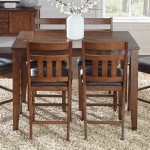Wall Mounted Spice Racks For Kitchen: A Comprehensive Guide
Wall-mounted spice racks offer a practical and aesthetically pleasing solution for organizing and accessing culinary seasonings within a kitchen environment. Optimizing countertop space and providing visual clarity, these racks represent a functional enhancement for both seasoned chefs and novice cooks alike. The selection of a suitable wall-mounted spice rack involves considering various factors, including material, size, mounting method, and overall design aesthetic to ensure it complements the existing kitchen decor while meeting individual storage needs.
The prevalence of wall-mounted spice racks is attributable to their space-saving properties. In kitchens where counter space is limited, these racks leverage vertical wall space, preventing clutter and allowing for a more streamlined and efficient workspace. This becomes particularly advantageous in smaller apartments or kitchens with constrained layouts, where maximizing available surface area is paramount. Properly installed, a wall-mounted spice rack ensures that essential spices are readily available and easily identifiable, contributing to a smoother and more enjoyable cooking experience.
Furthermore, wall-mounted spice racks can serve as a decorative element within the kitchen. A well-chosen rack, whether crafted from wood, metal, or a combination of materials, can enhance the overall visual appeal of the space. The arrangement of spices in visually appealing containers within the rack can further contribute to a sense of order and style, transforming a purely functional storage solution into a decorative detail.
Key Considerations When Choosing a Wall Mounted Spice Rack
Selecting the right wall-mounted spice rack requires careful consideration of several factors. These include the available space, the volume of spices requiring storage, the desired aesthetic, and the ease of installation. Understanding these factors will enable a more informed decision-making process, leading to the selection of a rack that effectively meets both functional and design requirements.
Firstly, assess the available wall space. Measure the area where the rack will be installed to ensure that it fits appropriately without obstructing doorways, windows, or other kitchen features. Consider the height at which the rack will be mounted, ensuring that it is easily accessible while remaining out of reach for young children. Visualize the overall layout of the kitchen and determine where the rack will be most conveniently located relative to the cooking area.
Secondly, evaluate the number of spices that need to be stored. This will determine the size and capacity of the rack required. Consider whether the spice collection is likely to expand in the future, and choose a rack that can accommodate potential growth. Options range from small racks designed for a handful of frequently used spices to larger, multi-tiered racks capable of storing a more extensive collection.
Thirdly, consider the aesthetic of the kitchen and select a rack that complements the existing decor. Wall-mounted spice racks are available in a wide range of materials, styles, and finishes. Wooden racks offer a warm and traditional look, while metal racks provide a more modern and industrial feel. Painted racks can be matched to the kitchen's color scheme, and glass-fronted racks allow for easy identification of spices while protecting them from dust and moisture. Ensure that the chosen rack aligns with the overall design aesthetic of the kitchen to create a cohesive and visually appealing space.
Finally, assess the ease of installation. Some racks are designed for easy installation with minimal tools and hardware, while others may require more advanced skills. Consider the type of wall on which the rack will be mounted. Drywall requires different anchors and screws than plaster or brick. If you are not comfortable with DIY projects, you may want to consider hiring a professional to install the rack.
Types of Wall Mounted Spice Racks
The market offers a diverse array of wall-mounted spice rack options, each catering to specific needs and preferences. Understanding the different types available allows for a more targeted search and ultimately, a more satisfactory storage solution. These types can generally be categorized by material, design, and functionality.
One common categorization is based on the material used in construction. Wood spice racks, often crafted from solid woods like oak or maple, provide a classic and durable option. Their natural grain patterns add warmth and character to the kitchen. Metal spice racks, typically made from stainless steel or wrought iron, offer a modern and robust solution. Stainless steel is particularly well-suited for kitchen environments due to its resistance to corrosion and ease of cleaning. Plastic spice racks offer a lightweight and affordable alternative, often available in a variety of colors and styles. However, they may not be as durable as wood or metal options.
Design considerations also play a significant role in the selection process. Tiered spice racks, with multiple shelves arranged vertically, maximize storage capacity in a compact space. Magnetic spice racks, which utilize magnetic strips to hold spice jars, offer a sleek and minimalist design. Spice racks with drawers or cabinets provide enclosed storage, protecting spices from light and dust. Floating spice racks, which appear to be suspended from the wall without visible supports, create a contemporary and visually striking effect.
Functionality also influences the type of wall-mounted spice rack chosen. Adjustable spice racks, with shelves that can be repositioned to accommodate different sized spice jars, offer flexibility and customization. Rotating spice racks allow for easy access to all spices, regardless of their position. Pull-down spice racks, which lower to a more accessible height when needed, are particularly useful for individuals with limited reach.
Furthermore, specialized spice racks designed for specific spice jar shapes and sizes are available. These racks often feature custom-shaped slots or compartments that securely hold the jars in place. This prevents them from tipping over or sliding around, especially when opening and closing nearby cabinets or drawers.
Installation Tips and Best Practices
Proper installation of a wall-mounted spice rack is crucial for ensuring its stability, safety, and longevity. Careful planning and attention to detail are essential for achieving a successful installation. This section outlines key tips and best practices for installing a wall-mounted spice rack.
Begin by accurately marking the location where the rack will be mounted. Use a level to ensure that the rack will be installed straight and plumb. Consider the height at which the rack will be mounted, taking into account factors such as accessibility and safety. Use a stud finder to locate wall studs, which provide the most secure anchoring points for the rack. If studs are not available at the desired location, use appropriate wall anchors to distribute the weight of the rack and its contents.
Select the appropriate screws and anchors for the type of wall on which the rack will be mounted. Drywall requires different anchors than plaster or brick. For drywall, use self-drilling anchors or toggle bolts, which provide a strong and secure hold. For plaster, use plaster anchors or drill pilot holes and insert wall anchors. For brick, use masonry screws or tapcon screws.
When drilling pilot holes, use a drill bit that is slightly smaller than the diameter of the screws. This will prevent the screws from stripping the holes. Avoid over-tightening the screws, as this can damage the drywall or plaster. Use a screwdriver or drill with adjustable torque settings to prevent over-tightening.
Once the rack is mounted, test its stability by gently shaking it. Ensure that it is securely attached to the wall and that it can support the weight of the spice jars. If the rack feels unstable, tighten the screws or add additional anchors. Periodically inspect the rack for loose screws or damaged anchors. Replace any damaged components as needed.
Finally, consider the placement of the spice jars within the rack. Arrange the jars in a visually appealing and functional manner. Group spices by type or frequency of use. Label the jars clearly so that they are easily identifiable. Consider using spice jar organizers to maximize space and prevent clutter. By following these installation tips and best practices, you can ensure that your wall-mounted spice rack is securely installed and provides years of reliable service.

Spice Rack Wall Mount Wooden Holder Shelves Spices Kitchen Organizers Etsy Singapore

2pack Wall Mount Spice Rack Organizer Metal Hanging Racks Single Layer Seasoning For Door Cupboard Pantry Wish
White Kitchen Organizer Shelf Wall Mounted Spice Storage Rack Holder Seasoning Bottle Multi Functional

Wall Mounted Spice Rack Kreg Tool

Wall Mounted Spice Rack Organizer Floating Storage Shelf Display W 50 Cm
2 Tier Spice Rack Hanging Kitchen Organizer Condiments Wall Mounted Tableware Shopee Singapore

Movisa 4 Pieces Wall Mount Spice Racks Seasoning Herb Jar Holder Organizer Kitchen Pantry Door Storage Shelf Y Mvdohaz24a The Home

Buy Metal Wall Hanging Spice Rack Seasonings Organizer For Kitchen Pantry Countertop Set Of 2 Black Online At Best Prices In Jiomart

Wall Mounted Metal Spice Organizer Rack For Countertop Racks And Kitchen Accessories Price Made In Com

Hanging Spice Rack Etsy








